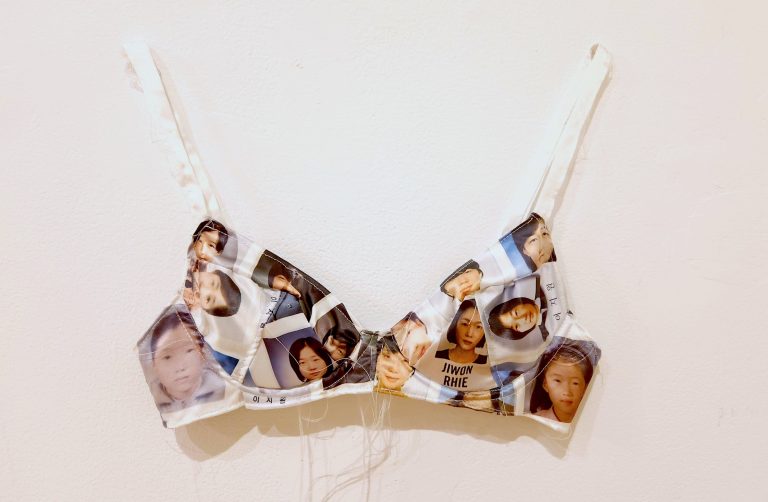As soon as I walked into La MaMa Galleria, I knew I was in for a treat. A video played in the gallery’s front window, showing Korean artist Jiwon Rhie being repeatedly slapped by a hand-shaped installation she made. From the lines on her face to her bobbed hair that sways back and forth, it’s clear that Rhie’s fascination with movement and incongruity will take root in her Suddenly, the image explained everythingthe exhibition will run until this Sunday (June 30).

At the entrance to the gallery space, Rhie’s nervous Flower Dog (2016-Present) Barking and running at the feet of two gumball machines provided by Short Stop Gallery, which are separated by wrapping cloth provided by Project Art Distribution. Flower Dog Trapped inside a functioning vending machine that demands 50 and 75 cents, respectively, for a fun souvenir, including the artist’s keychain and temporary tattoo. While the mechanical toy dog is the most dynamic, colorful, and interactive part of the exhibition, Rhie weaves this type of living object into her other works as well.

Rhie transforms elements of her life into wearables by showcasing her customize (2023), a series of six bras made from fabrics the artist digitally printed with documents, photographs, and selected texts from her personal history. According to Rhie, bras are a mandatory social custom for Korean women, designed to cover nipples and appear neat, which contradicts the recent loosening of attitudes in some parts of the world regarding the necessity of underwear. Rhie inserts herself into the confines of underwear and the expectations of wearing it, humorously questioning how these social rules shape our perception of ourselves as we try to present our best self to the public.



The artist, who came to the United States in 2017 to pursue her MFA at Pratt Institute, has used her practice to explore her feelings of displacement, cultural ambivalence, and the interpretation of the self as a tool through which we navigate the world. This is most evident in her ongoing pursuit of reflective installations that disrupt or distort the viewer’s image. Chopped, layered, and scattered across dynamic blinds and fixed lattice-board room dividers, the viewer’s translucent reflection is shredded, layered, and scattered, looking utterly absurd, like a playground that leans into a recurring theme: despite your best efforts, you can’t control how others see you.
I probably enjoyed trying to find the craziest ways I could change my image – like a kid using PhotoBooth on a Mac for the first time – and I highly recommend anyone visiting the exhibition to do the same. Rhie’s investigation into cross-cultural social practices and self-image is clean and funny, giving equal weight to sensitivity and humour, while also offering a unique, thought-provoking exploration of the boundaries between objectification and autonomy for immigrants.


